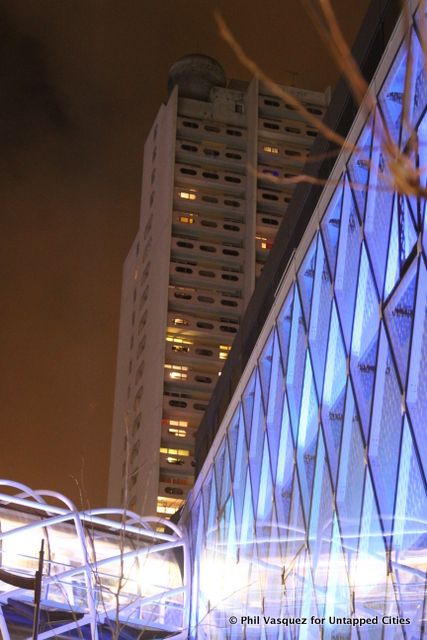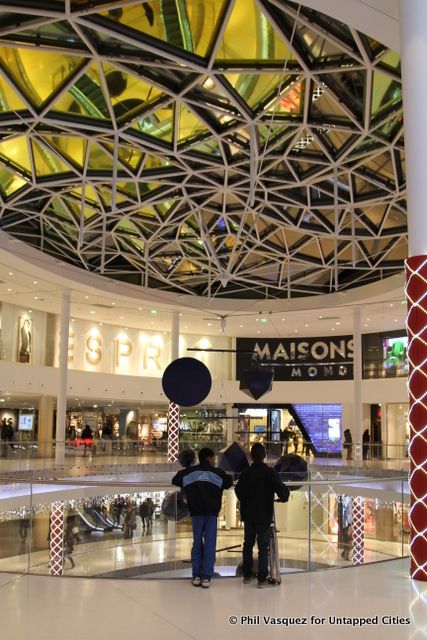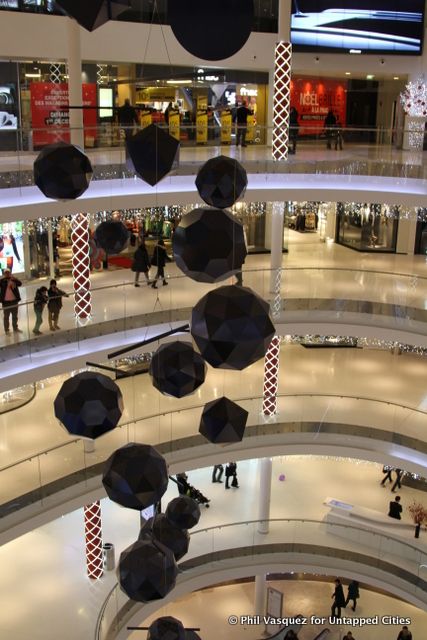Last Chance to Catch NYC's Holiday Notalgia Train
We met the voices of the NYC subway on our nostalgia ride this weekend!


We’ve got a little soft spot for shopping malls, whether looking at their struggles in historical zones like South Street Seaport in Lower Manhattan or theorizing about the faux-architecture of planned shopping towns like Val d’Europe in Paris. But it’s rare that we get the opportunity to take a fresh look at a new shopping center as it opens its doors in the middle of a major capital. What’s more, this time it’s in the heart of Paris, a city known for its small shops and boutiques.
On the surface, Beaugrenelle Paris in the 15th arrondissement is a very eco-friendly shopping center, providing one of the most populated and largest arrondissements in Paris with shopping that rivals even the grands magasins along Boulevard Haussman. But from a more historical and urban planning perspective, Beaugrenelle underlines a decades long struggle to utilize this stretch of the Seine in a contemporary way while maintaining a harmonious balance between residential and commercial districts.


Beaugrenelle is a redesign of the former shopping center built in the late 1970s. It opened its doors to the public on October 23rd, 2013 almost three years and a reported 450 million euros after it broke ground among the towers of the Front de Seine development. Entering the main doors of both buildings named “Panoramic” and “Magnetic,” one is instantly led towards the center of each structure where it becomes clear that this is no suburban mall. Taking cues from vertical shopping centers in Asia, most of the visual references to conventional cross-shaped mall layouts have been completely scraped off the palette.

The spherical interior pulls the escalators away from the usual side-by-side arrangement to a symmetrical but multidirectional one, so that one never has to navigate too far to get to any particular store or service. It’s quite easy to see the stores on other levels by simply looking around the shopping center’s curved walls. In some ways, we’ve returned to the multi-level voyeuristic, flaneur-like shopping experience that was promulgated in 19th century Paris in the grand magasins.

Natural light cascades in from ceiling domes of glass giving the space inside an airiness one doesn’t associate with shopping centers this size. Beaugrenelle Paris’ website boasts about the “sensual and feminine” curved lines of the buildings and their interiors that manage to blend seamlessly with the surrounding apartment and office tower–a claim that sounds more like ad copy to attract new businesses and investors than an accurate depiction of the complex’s aesthetic relationship with its neighborhood.

Unfortunately, one of the most interesting features of the entire shopping center isn’t in plain sight. The rooftops of the buildings are topped by a total 7,000 m2 (75,347 ft2) of regional vegetation planted 15 inches deep. This green roof, the size of a football pitch, is the largest of its kind in Paris and while it will be shared among neighboring schools for ecologically-minded community projects, it seems a missed opportunity to not have integrated it into the shopping center’s experience. There is certainly nothing in the mall at present that alerts visitors to the fact that they are in one of the most sustainable and ecologically sound buildings in the city.

Many in the neighborhood aren’t thrilled by the size of this shopping center (a third larger than its predecessor) and are concerned about how the added congestion will affect vehicular and pedestrian traffic. This is an example of a structure that is best critiqued with an understanding of what came before. The Brutalist architects wanted nothing to do with a look that recalled images of wartime struggles or referenced history. There was a desire to catapult France into the future, but the accompanying aesthetic became quickly outdated, ironically.
Though Beaugrenelle is certainly not a sight purists would love, it’s difficult to make a case for having kept the former shopping center as it was. Only time will tell if the redesign is successful or if this waterfront district will once again suffer at the hands of a shopping center that falls out of fashion, and into disuse and disrepair. Perhaps it finally achieves the 1970s goal of the Front de Seine project to showcase Paris as a forward thinking city, while also managing to keep in mind that completely ignoring the past has effects that can take decades to reverse.
Phil Vasquez is a writer and filmmaker living in Paris. Get in touch with him @tinpanalleypics.
Subscribe to our newsletter